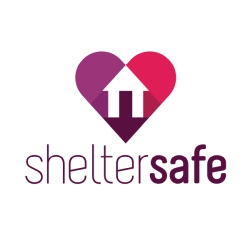Learn more about Intimate Partner Violence
Royal LePage® REALTORS® help their clients achieve the dream of home ownership, but they know that a house is not truly a home unless it’s safe. Sadly, violence and abuse affects thousands of Canadian families, which is why the Royal LePage® Shelter Foundation™ exists.
Learn more from Canadian journalist and survivor, Anna Maria Tremonti.
Help is available
The Royal LePage Shelter Foundation is proud to be a national founding partner of sheltersafe.ca, an online, clickable map that provides the 24/7 contact information for women’s shelters from coast to coast. If you or someone you know is experiencing violence or abuse, help is just a click away. Sheltersafe.ca is an initiative of Women’s Shelters Canada.
For a list of provincial and territorial helplines, visit sheltersafe.ca/find-help/
How to help someone experiencing intimate partner violence
The first step away from intimate partner violence is often a conversation with a friend, family member, neighbor or coworker who recognizes signs of abuse and knows how to respond with supportive, stigma-free conversations*.
Unfortunately, while two thirds of people in Canada know a woman who has experienced abuse, many of us are unsure of how to support those who are in unhealthy relationships. A Canadian Women’s Foundation survey indicated that only 1 in 6 people in Canada are very confident that they would know what to say or do to support someone experiencing emotional abuse and only 1 in 5 are very confident that they would know what to say or do to support someone experiencing physical abuse.
If someone tells you that they are experiencing abuse, here are some starting points for offering support*:
- If you or someone else is in immediate danger, call 911 or your local emergency number.
- Focus on the person being hurt. Your job is to support them. Make sure you are not putting your anger, shock, sadness, or fear first in the conversation.
- Remember that everyone copes with abuse differently. Listen and let them lead. Instead of telling them what you would do or what they should do, ask them how you can best support them.
- Be judgement-free. Instead of saying “What did you do?”, “How did you make them mad?”, “Why don’t you leave?” or “You chose this relationship,” say: “It’s not your fault.” “I’m here for you.” “How are you doing right now?”
- Be patient and open-minded. Abusive relationships are complicated, scary, confusing, and traumatic. Figuring things out takes time. You may need to have more conversations with this person. Don’t push. There is no one right answer and no quick fix.
- Refer them to a local crisis line where they can discuss their options and start making a safety plan. Visit sheltersafe.ca to find the 24/7 contact information of a women’s shelter in your community.
*Reprinted with permission from the Canadian Women’s Foundation
Canadian Women’s Foundation 2021 https://canadianwomen.org/blog/new-survey-few-well-prepared-to-support-someone-facing-gender-based-violence/
Statistics and Facts About Family Violence
Royal LePage® REALTORS® help their clients achieve the dream of home ownership, but they know that a house is not truly a home unless it’s safe. Sadly, violence and abuse affects thousands of Canadian families, which is why the Royal LePage® Shelter Foundation™ exists.
- 51% of Canadian women over the age of 16 have experienced at least one incident of sexual or physical violence.[1]
- 67% of Canadians say they personally know at least one woman who has been physically or sexually assaulted.[2]
- On average, every six days in Canada a woman is murdered by her intimate partner.[3]
- On any given day in Canada, more than 3,300 women (along with their 3,000 children) are forced to sleep in an emergency shelter to escape domestic violence. Every night, about 200 women are turned away because the shelters are full.[4]
- Each year, over 40,000 arrests result from domestic violence—that’s about 12% of all violent crime in Canada.[5] Since only 22% of all incidents are reported to police, the real number is much higher.
- According to the Department of Justice, each year Canadians collectively spend $7.4 billion to deal with the aftermath of spousal violence. This figure includes immediate costs such as emergency room visits and future costs such as loss of income. It also includes tangible costs such as funerals, and intangible costs such as pain and suffering.[6]
- According to police, men (49%) and women (51%) in Canada are equally at risk of violent victimization. However, men are much more likely to be assaulted by a stranger or someone from outside their family, while women are much more likely to be assaulted by someone they know.[7]
- Some people wonder why a woman stays in an abusive relationship. Women often stay because the abuser has threatened to kill them if they leave, or to kill himself, or to kill their children.[8]
- Although adults may think “the kids don’t know,” research shows that children see or hear many domestic violence assaults.[9]
- Each year in Canada, an estimated 362,000 children witness or experience family violence. [10]
This information is courtesy of the Canadian Women’s Foundation (canadianwomen.org). Please note the original sources below.
